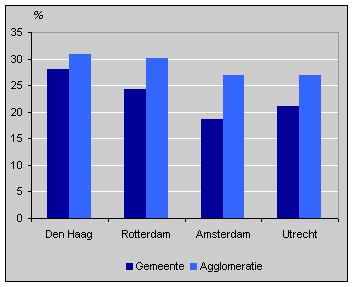Lower incomes live closer together

Households in the low income bracket lived increasingly closer together in the period 1994 to 1998. In 1998 nearly three out of ten households would have had to move house to realise an even distribution of low incomes across the country. In 1994 this was still only one quarter of households.
The spatial separation between rich and poor increased most in medium-sized municipalities (50,000 – 100,000 inhabitants). In these municipalities, separation was not much less on average in 1998 than in the big cities. In smaller municipalities the division was less prominent than in medium-sized and large municipalities.
In most municipalities the share of low-income households was smaller in 1998 than in 1994. The rate of decrease in the number of low-income families varied between municipalities, just as the change in the extent of separation. However, changes in the spatial distribution of households with a low income were not connected with the proportion of low incomes in the community.
In the Dutch urban agglomerations there were very substantial differences in household income between the core and the suburb municipalities. These differences are an essential component of the separation between lower and higher incomes, and results in a much higher degree of separation in the agglomerations than in the core municipalities. However, the differences between the agglomerations were much smaller than those between the core municipalities.
Separation of low income households, 1998

The agglomeration of The Hague had the greatest degree of separation (31%), but the difference with the Rotterdam agglomeration is only small. Amsterdam and Utrecht followed at a distance.
Rens Trimp